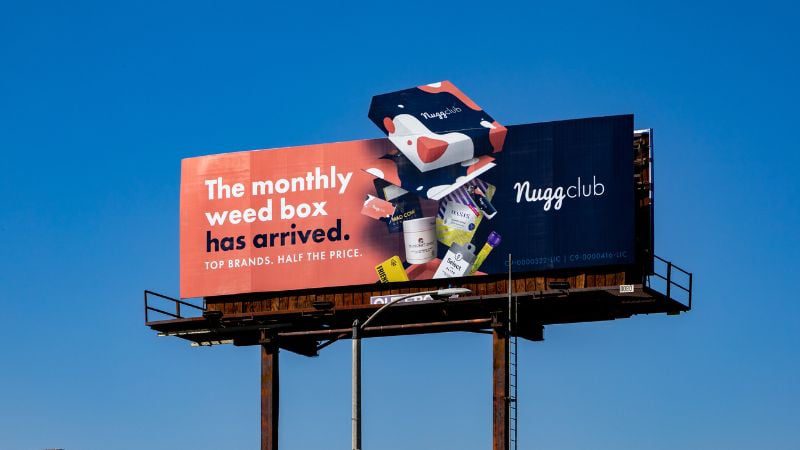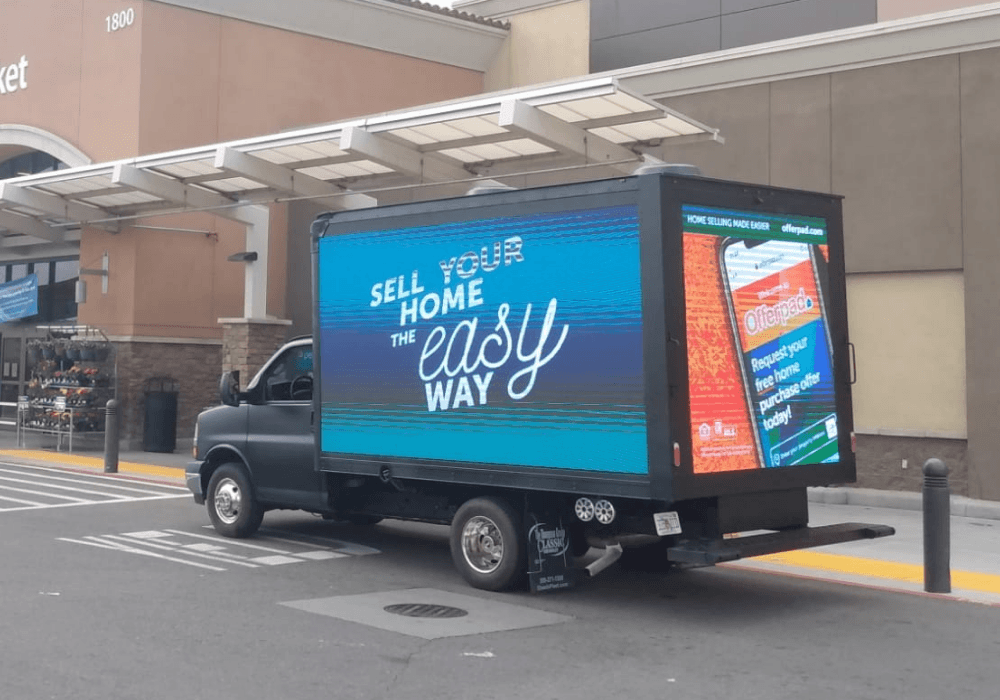Out of home (OOH) advertising and technology have expanded a great deal in recent years. Mobile billboards in particular have become a popular option for marketers looking to reach their target audience. And the timing for mobile OOH is right — consumers are now taking deliberate notice of their surroundings and more than two-thirds of consumers say they notice OOH ads on road trips.
What are mobile billboards?
Put most simply, mobile billboards are billboards that move. A more detailed definition: mobile billboards are out of home advertisements on a moving (or even stationary at times) vehicle that stays within a specified area with the intention of being seen by your target audience. There are two main types of mobile billboard advertising:
- Classic or static mobile billboards
- Digital mobile billboards
The advantages of static billboards
Traditional roadside billboards are an enduring marketing asset because they work. You can reach massive audiences to build and reinforce brand awareness or boost omnichannel campaign reach and engagement.
Today, static billboards can also bring your message up close at eye level when used as:
- Wallscapes
- Street furniture
- Wall-mounted posters indoors
Static billboards cannot be deleted, blocked, turned off or tossed out. And they aren’t subject to technical issues. You get:
- 100% viewability — ads are visible around the clock, every day, for the duration of the advertising period
- 100% share of view — no competition from surrounding ad clutter or other ads in rotation
Static billboards can be physically expanded with extensions or 3D.

Street-level placements can use QR codes to invite interaction with your brand.
The advantages of digital billboards
Thanks to LED technology and Wi-Fi, billboards have gone digital. They offer the same benefits as classic static billboards, but digital billboards offer distinct advantages.
Static billboards work best when they are simple and bold. With digital, you can add:
- Brightly lit visuals that ensure your message gets seen day and night, no matter the weather
- Photos or other graphics
- Moving images
- Even short videos
- Audio
Your ad will rotate with other ads so it won’t be seen constantly. But digital offers:
- More tailored targeting
- Ability to change content or start or pause campaigns, almost in real time
- Contracts are not typically required, unlike static billboards
The advantages of mobile billboards (static and digital)
Add wheels and you have a mobile billboard. Now you have all the advantages of static or digital billboards and your message is no longer stuck in one place. You can proactively take your message directly to your audience rather than waiting for them to drive or walk by.
The ad itself can be static, as in a wrapped vehicle, a poster that covers the entire side of a truck or a printed taxi topper.

Or the ad can be digital. In this case you get all the attributes of any digital billboard plus the flexibility of changing locations. LED trucks and taxi toppers with screens are both examples of mobile digital billboards.
Mobile billboards can go anywhere there’s a road. And geo-targeting helps you strategically plan routes according to your goals:
- Move from one city to another
- From one target area to another, in any part of town
- Stay within a particular neighborhood or near a particular venue
They can also stop along the way to engage with one-on-one with audiences:
- Pop-up sampling station or product demonstration
- Hand out coupons or swag
- Let people take a survey or play a video game
Mobile digital billboards work for any size brand in any size market.

How to achieve great results with mobile billboards
Each mobile billboard style offers its own unique benefits. So you can use one, or a combination, depending on your audience and campaign goals:
- Choose a flight of static mobile billboards to expand reach and frequency
- Enhance visibility, creative and engagement opportunities with digital mobile billboards
Want to learn more? Our free playbook, Startup Billboards of Silicon Valley, is packed with billboard marketing tips and examples any brand can use, especially if you’re entering a new market or introducing a product.
